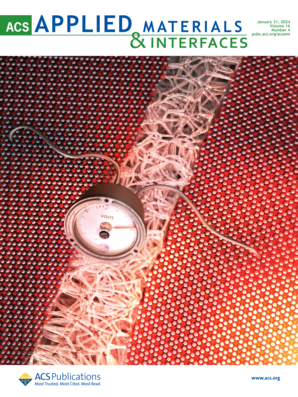Reconfigurable Transport and Assembly of Colloidal Particles via Opto-Chemical-Electronic Tweezer (OCET)
IF 8.3
2区 材料科学
Q1 MATERIALS SCIENCE, MULTIDISCIPLINARY
引用次数: 0
Abstract
Transporting and assembling colloidal particles is key to applications such as drug delivery, the fabrication of functional materials, and microrobotics. As a result, there is intense effort in developing techniques for manipulating colloids at high spatial and temporal resolutions, and in a dynamic, reconfigurable manner. Although optical manipulation provides precise particle control, its application is often limited by high energy requirements and intricate setups. In this study, we present an opto-chemical-electronic tweezer (OCET), a novel particle manipulation strategy that addresses these limitations. The OCET system utilizes a photocatalytic TiO2/Pt film irradiated with perpendicular UV light. An electric field is then generated parallel to the film at the boundary of the patterned UV light, directed from the illuminated region to the dark region. The consequent electrophoresis and electroosmosis work in tandem to move inert colloidal particles (e.g., SiO2 microspheres) at ∼1 μm/s and trap them a few μm inside the illuminated region along the boundary of the light pattern. By dynamically modulating light patterns, the OCET system achieves directional particle transport and reconfigurable colloidal assembly into arbitrary patterns. The OCET system holds promise for applications in optofluidics, micro/nanorobotics, and biomedical systems, setting the stage for further advancements in optical manipulation technologies.

利用光化学电子镊子(OCET)实现胶体粒子的可重构传输和组装
运输和组装胶体粒子是药物输送、功能材料制造和微机器人等应用的关键。因此,人们正在大力开发以高空间和时间分辨率以及动态、可重构的方式操纵胶体的技术。虽然光学操纵能提供精确的粒子控制,但其应用往往受到高能量要求和复杂设置的限制。在本研究中,我们介绍了一种光化学电子镊子(OCET),这是一种新型粒子操纵策略,可以解决这些局限性。OCET 系统利用垂直紫外线照射光催化 TiO2/Pt 薄膜。然后,在紫外光图案的边界处产生平行于薄膜的电场,电场从照射区域指向黑暗区域。随之产生的电泳和电渗协同作用,使惰性胶体粒子(如二氧化硅微球)以 1 μm/s 的速度移动,并沿着光图案的边界将它们俘获在照明区内几微米的地方。通过动态调制光图案,OCET 系统实现了粒子的定向传输和可重新配置的胶体组装成任意图案。OCET 系统有望应用于光流体学、微/纳米机器人和生物医学系统,为光学操纵技术的进一步发展奠定基础。
本文章由计算机程序翻译,如有差异,请以英文原文为准。
求助全文
约1分钟内获得全文
求助全文
来源期刊

ACS Applied Materials & Interfaces
工程技术-材料科学:综合
CiteScore
16.00
自引率
6.30%
发文量
4978
审稿时长
1.8 months
期刊介绍:
ACS Applied Materials & Interfaces is a leading interdisciplinary journal that brings together chemists, engineers, physicists, and biologists to explore the development and utilization of newly-discovered materials and interfacial processes for specific applications. Our journal has experienced remarkable growth since its establishment in 2009, both in terms of the number of articles published and the impact of the research showcased. We are proud to foster a truly global community, with the majority of published articles originating from outside the United States, reflecting the rapid growth of applied research worldwide.
 求助内容:
求助内容: 应助结果提醒方式:
应助结果提醒方式:


